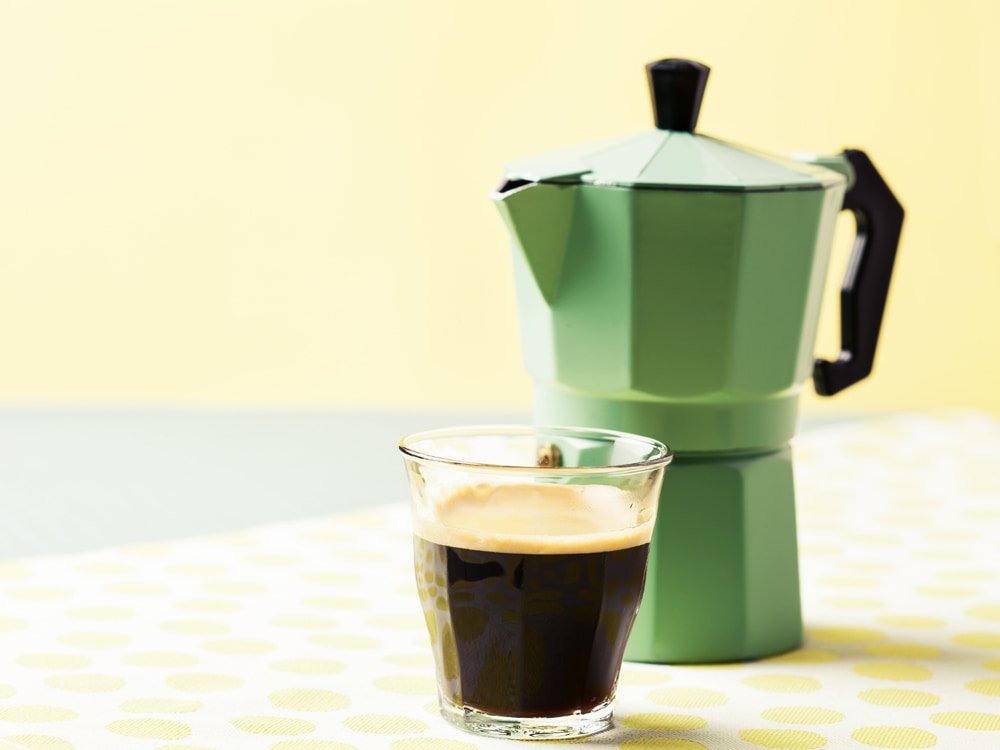
Nothing is better than listening to the sizzling of a steak accompanied by the aroma wafting through the air to make your mouth salivate.
Camping evokes images of fishing, nature, and most importantly cooking by the camp grill. There’s nothing like eating burgers fresh off the grill with onion, pepper, lettuce, and tomato.
Portable camping grills are the center of most camping experiences. Having a powerful, lightweight, and effective barbeque grill can make all the difference.
They are your ultimate culinary tool when venturing on a camping adventure, along with a sharp chef’s knife of course.
The top selection of portable camping grills are:
Best Overall: Napoleon Travel Q 285
Best Budget: Cuisinart CCG190RB
Most Compact: Coleman Gas Camping Stove
Best for Various Weather: Coleman Camp Propane Stove/Grill
What Should You Look for in a Camp Grill?

Whether you’d like to make a delectable grilled chicken breast, with a side of baked potato, or lots of steak choosing the right camp grill can prove to be overwhelming.
Depending on your preferences, there are many factors to consider such as the grill size, the actual grilling surface, portability, and style.
Perhaps you enjoy the art of charcoal grilling or prefer the cleaner approach with a portable propane gas grill, however you decide to cook one thing is certain – eating outdoors is enlivening.
Ideally, you want a BBQ grill that lasts, is easily transported, and cooks amazing steaks.
The selection narrows down considerably for most people when they really examine how much space they need to transport a camp grill. This will depend on how you go camping.
Portability
When going camping, space is always at a premium. Therefore, most expert campers know only to take what is necessary and pack well. Oftentimes, this means using every amount of space available to the fullest, depending on what you need to take and how you are traveling.
For some, space is not as big of an issue. If you are traveling with an RV, you may have enough space for a larger grill. But if you are traveling using a van or car, space may be tight, and your selection needs to reflect that.
Generally, your portable grill should be compact and lightweight. It should easily store in your vehicle and not be cumbersome. The best portable grills fold down to save space. They also contain wheels, which makes them easy to transport.
If you are carrying the grill longer distances, opt for one that is lighter. However, if you are using it for tailgating, or cooking directly at the campsite or in your own backyard, then weight is inconsequential.
Fuel Type
Each camp grill comes with different fuel types. Which one you choose depends on your own personal preferences and tastes. Each different fuel has its own distinct advantages and disadvantages.
Electric
Grills that run on electricity don’t need extra fuel. They use heating elements to cook food. Generally, they are available in two styles: open and clamshell. Open grills contain only one heat element located under the grill. Clamshell grills contain two heat element griddles that will close surrounding the food, generating an even cook.
These grills are very simple to use, making them perfect for novices. Obtaining an evenly cooked meal is effortless. Since there are no other external sources of fuel, they are safe around pets and children.
The only disadvantage of an electric grill is that it needs power to operate. Therefore, it is not well-suited for camping in the wilderness. Additionally, an electric grill doesn’t provide the smoky taste that accompanies grills using charcoal.
Gas
Gas as a fuel is easily available and inexpensive. It is also easier to use than charcoal.
While providing instant heat at the turning of a dial, users can commence cooking in seconds. Gas grills are easy to clean since there are no ash remnants left over after you have finished.
Unfortunately, there are some safety risks with gas grills. Users need to be aware of how to dispose and store gas canisters properly. The largest downside of gas camp grills is that they don’t provide the smoky taste that charcoal fuel does. This taste is often associated with cooking outdoors.
Charcoal
A charcoal grill tends to be the cheapest on the market. Charcoal is affordable and readily available. It also generates a real smoky taste that is difficult to duplicate using other methods.
However, grilling with charcoal requires skill in achieving desirable results. Charcoal is difficult to begin to burn in windy conditions, and heat can vary across your grilling area should the coals not be evenly distributed.
It may become a fire hazard since it can split. Charcoal also smolders after the heat has dissipated, so users need to allow it to completely cool before disposing of the ashes responsibly to prevent a fire.
Also, refrain from storing recently used charcoal inside an RV or tent since it may emit poisonous levels of carbon monoxide.
Temperature Control/Vents
For electric and gas grills, select one with temperature control. This makes it easier to operate and cook with. Since the grills are compact, many only contain a single burner. However, the ability to adjust temperature will make it easier to cook different food varieties.
If it has more than a single burner, the ability to cook at different temperatures with each burner provides flexibility to cooking various foods simultaneously without burning.
For charcoal grills, find a model that has vents to control temperature. They can be located on the base of the grill or the lid. Opening them will allow increased oxygen to reach your coals for a faster and hotter burn. You can also close the vents to maintain temperature for a smolder.
Surface Area of Grate
Grills are available in many sizes. Your idea size will reflect the number of people you’re cooking for. For two people, a surface area of 130 square inches is adequate. However, if you are cooking for family or friends, select one that is 240 square inches.
There are some grills that provide dual cook zones, with one side operating as a grill and the other designed for side dishes/veggies. When deciding on size, remember that you will need to have a couple of inches between food for safety, especially when you’re cooking meat.
Lid
Lids should be well-fitted as they will help with temperature control, especially if the weather is windy. Choose a lid that has a quality locking mechanism and seals well. This prevents your lid from opening while transporting.
Ignition and Temperature Gauge
Some grills have a built-in temperature gauge found in the lid. They are ideal when making complicated meals, like whole birds or fish. If food safety is a concern, you can purchase a meat thermometer.
In terms of ignition, spark ignitions are the preferred choice. They are safer to use and will never disappoint if you forget to pack matches.
British Thermal Units (BTU)
BTU measures heat output. Higher BTU units achieve higher temperatures quicker than lower ones. Cooking temperatures are reached faster with less wait time. A decent grill will have 5,000 BTUs or lower, but it’ll take longer to heat. Ideally, it will have at least 12,000 BTUs.
Number of Burners
For two people, a single burner works well. For anything more, multiple burners are a better choice. Multiple burners will allow you to cook a variety of food simultaneously. Your main and side dishes will be ready at the same time. They are also great for keeping food warm.
Best Camp Grills
Since there are a wide variety of camp grills available, here are some of our top picks that are durable, portable, and will provide an excellent grilling experience.
Best Overall: Napoleon Travel Q 285

Fuel: Gas
The Napoleon Pro camp grill offers dual burners comprised of stainless steel for durability. The porcelain cast iron cooking grids provide even, consistent heat while cooking, and it even comes with a weather guard to protect against the wind.
This grill also contains an ignition system, and users have precise control of temperature. This grill will provide users with the perfect high temperatures necessary for a bake, roast, or sear.
Pros:
- 12,000 BTUs
- Cooking area is 285 square inches
- Non-stick surface
- Easy to clean
- Temperature gauge
Cons:
- Little heavier than its competition
- Lid is heavy, so it needs to be opened slowly to prevent grill from tipping
Best Budget: Cuisinart CCG190RB

Fuel: Charcoal
This grill offers 150 square inches of available space on a chrome-plated rack. It distributes heat efficiently and evenly across the surface. The dual-vent system provides great control over managing the charcoal and allows you to easily control the temperature.
The three lid locks create a safe and easy transport, and this grill is extremely lightweight at only two pounds.
Pros:
- Comes with an ash catcher and enamel coated firebox
- Sizes are 14’’-16”
- Air inlet located on the bottom of grill with air exhaust vents found on the lid
Cons:
- Challenging to assemble
- Grill may be a bit fragile
- Challenging to assemble
- Grill may be a bit fragile
Most Compact: Coleman Gas Camping Stove

Fuel: Liquefied Petroleum Gas
With five adjustable burners and adjustable temperature control, this camping grill is perfect for larger gatherings. It contains wind-blocking panels that act as a shield, and pressure regulators provide consistent levels of heat for a better cooking experience. Additionally, the grates are chrome-plated, making them easier to clean.
Pros:
- 22,000 BTUs
- Cooktop is resistant to rust
- PerfectFlow keeps heat consistent
- Secure latch keeps grill closed
- Packs away flat
Cons:
- No ignition switch
- Little heavier
Best for Various Weather: Coleman Camp Propane Stove/Grill

Fuel: Propane
This grill folds flat for easy storage and saves a great deal of space. It is a 2-in-1 design, allowing users to utilize the stove and grill simultaneously. You don’t need a match to light it, as it has a push-button ignition. It will also provide a consistent cook, even in windy or extreme weather conditions due to the pressure control.
Pros:
- 20,000 BTUs
- Two adjustable burners
- Wind-block panels
- Removable drip tray
- Secure clasp for easy transport
- Three-year warranty (limited)
Cons:
- Smaller cook space – 130 square-inch gilling area
- Doesn’t cook food evenly
Each camp grill will perform differently depending on your area of expertise and how many people you are cooking for. For the perfect grill, make sure the components are stainless steel where available. They will be more resistant to rust and will last longer. Also, ensure that you can easily transport it as well.








